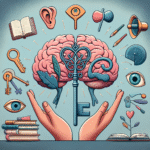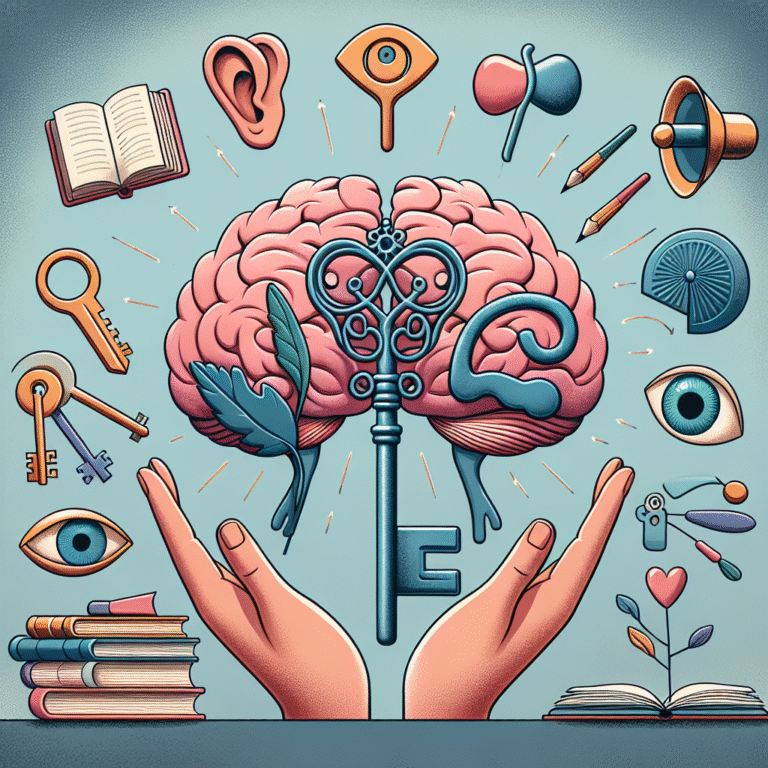Redefining Learning: The Impact of Digital Tools on Students with Learning Disabilities
Introduction
In today’s fast-paced digital age, the landscape of education is undergoing a monumental transformation. For students with learning disabilities, this shift is not just a matter of convenience; it’s revolutionary. Digital tools are redefining learning, offering unprecedented opportunities for engagement, support, and success. As educators and families strive to provide the best possible conditions for learning, understanding the impact of these tools becomes essential. This article explores Redefining Learning: The Impact of Digital Tools on Students with Learning Disabilities, providing unique insights into how technology can pave the way for inclusive, effective, and personalized education.
Understanding Learning Disabilities
What Are Learning Disabilities?
Learning disabilities are neurologically-based processing problems that can hinder an individual’s ability to read, write, speak, or compute mathematical calculations. They can manifest in various forms, including dyslexia, dysgraphia, and dyscalculia, each presenting unique challenges to the affected student. Traditional educational methods often fail to accommodate these differences, leading to frustration and disengagement.
The Importance of Early Identification
The key to supportive education for students with learning disabilities is early identification. When students are diagnosed at a young age, interventions can be implemented sooner, increasing the effectiveness of remediation strategies. Digital tools can play a significant role in this process, allowing educators to track progress and customize learning experiences.
The Digital Transformation of Education
The Rise of Educational Technology
In the last decade, educational technology has moved from being a supplementary resource to a pivotal component of educational practice. Classrooms are now filled with tablets, interactive whiteboards, and a plethora of software applications designed to engage and support diverse learning needs. This shift is particularly crucial for students with learning disabilities, who often thrive in environments that offer flexibility and interactivity.
Major Types of Digital Tools Impacting Learning
Digital tools can be categorized into various types, each contributing uniquely to the redefining of learning. These include:
- Assistive Technology: Tools designed to help students overcome challenges, such as speech-to-text software and text-to-speech programs.
- Adaptive Learning Platforms: Systems that modify content and approach based on individual learning paths, making sure that each student learns at their own pace.
- Gamification: Incorporating game elements in learning experiences to enhance engagement, motivation, and retention.
Case Study: The Impact of Speech-to-Text Technology
Background
A student named Alex, diagnosed with dyslexia, struggled with writing assignments, leading to significant stress and low self-esteem. Traditional methods were ineffective, and Alex often felt left behind in the classroom.
Implementation of Digital Tools
After being introduced to speech-to-text technology, Alex’s experience transformed. He could express his ideas verbally, allowing him to participate actively in class discussions and improve his writing skills without the barriers posed by dyslexia.
Results
Within a short period, Alex’s grades improved, but more importantly, his confidence soared. This case illustrates the effectiveness of digital tools in redefining learning for students with learning disabilities.
Navigating the Digital Landscape
Building a Personalized Learning Environment
Digital tools facilitate the creation of personalized learning environments tailored to each student’s strengths and challenges. Teachers can customize material and adjust their teaching methods, ensuring that learning is aligned with each student’s unique needs.
Example of Personalization: Customized Learning Plans
Many educational apps now offer features that help teachers create customized learning plans. Through assessments and tracking, educators can identify areas where students struggle and adapt the curriculum accordingly. For instance, if a student finds mathematics challenging, specific apps can provide additional exercises focusing on this topic.
The Role of Teachers and Educators
While digital tools are powerful, the role of teachers is crucial in maximizing their effectiveness. Educators must be adequately trained to use these technologies and to understand the unique needs of students with learning disabilities.
Professional Development and Training
Investing in professional development ensures that educators can seamlessly integrate digital tools into their teaching strategies. Workshops, webinars, and practical training sessions can empower teachers to leverage technology effectively.
Challenges and Considerations
Digital Divide
As transformative as digital tools are, the disparities in access to technology—often referred to as the digital divide—remain a significant hurdle. Students in underfunded schools or low-income households may lack access to the tools that facilitate learning.
Over-reliance on Technology
While technology can enhance learning, over-reliance can inhibit students from developing essential skills. Educators must strike a balance, ensuring that while they incorporate digital tools, they also promote traditional learning methods to ensure well-rounded education.
Future Directions in Education Technology
The Investment in Research and Development
To continue redefining learning for students with learning disabilities, increased investment in research and development is fundamental. Innovative strategies, tools, and techniques must be explored and evaluated regularly to ensure they meet the evolving needs of all students.
Crowdsourcing Solutions
Educational institutions can benefit from crowdsourcing ideas and solutions from parents, educators, and even students. This collaborative approach can lead to practical, user-friendly tools that better cater to the specific requirements of learners with disabilities.
Conclusion
In a world where digital tools are becoming an integral part of education, redefining learning for students with learning disabilities is no longer an abstract goal; it’s a reality that can foster empowerment and growth. The personalized, engaging, and supportive environment cultivated through these tools can create pathways to success that were previously unimaginable.
As we embrace the potential of technology, we must continue advocating for equitable access and comprehensive training for educators. By doing so, we can ensure that all students, irrespective of their challenges, have the opportunity to realize their fullest potential. The journey toward redefining learning is one of collaboration, innovation, and hope—a journey that ultimately elevates the classroom experience for everyone.
FAQs
1. What types of digital tools are best for students with learning disabilities?
Digital tools that provide assistive technology, such as speech-to-text software, adaptive learning platforms, and gamified learning applications, are often the most effective for students with learning disabilities.
2. How can parents support the use of digital tools at home?
Parents can encourage the use of digital tools by setting aside time for their children to use educational apps, monitoring progress, and collaborating with teachers to understand how technology can complement their learning.
3. What should educators consider when integrating digital tools into their teaching?
Educators should evaluate the effectiveness of the tools, ensure they align with learning objectives, receive proper training, and understand the individual needs of their students to maximize the benefits of technology.
4. Are there any concerns about students becoming too reliant on digital tools?
Yes, while digital tools can significantly enhance learning, it is essential to maintain a balanced approach that incorporates traditional methods to ensure students develop essential skills.
5. How can schools address the digital divide?
Schools can partner with community organizations, apply for grants, and advocate for policies that increase funding and access to technology for underserved students, thereby bridging the digital divide.
The journey of redefining learning through digital tools for students with learning disabilities is indeed a significant and inspiring chapter in the evolution of education. We must continue to strive for innovation, inclusivity, and empowerment, ensuring that no learner is left behind in this digital age.






